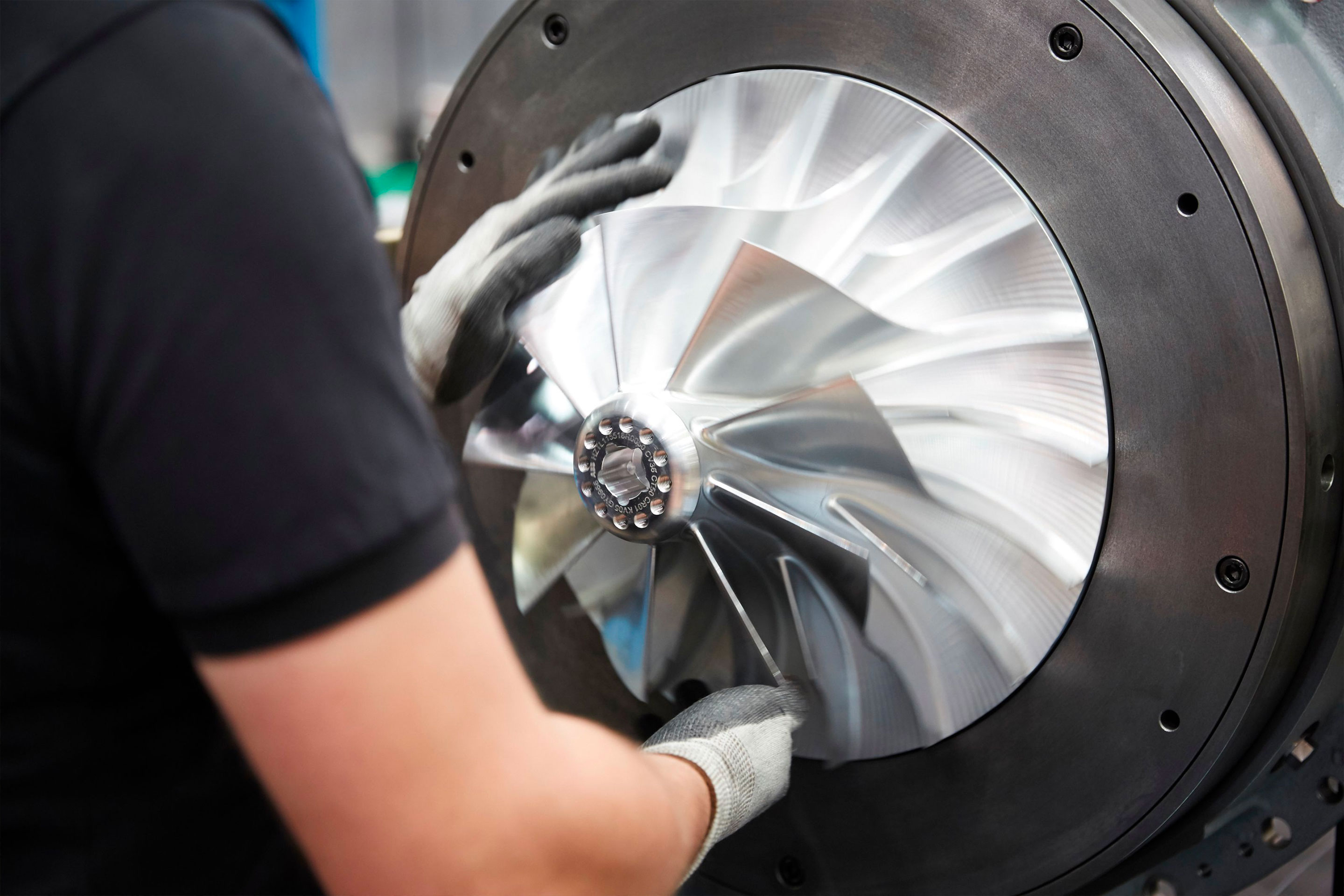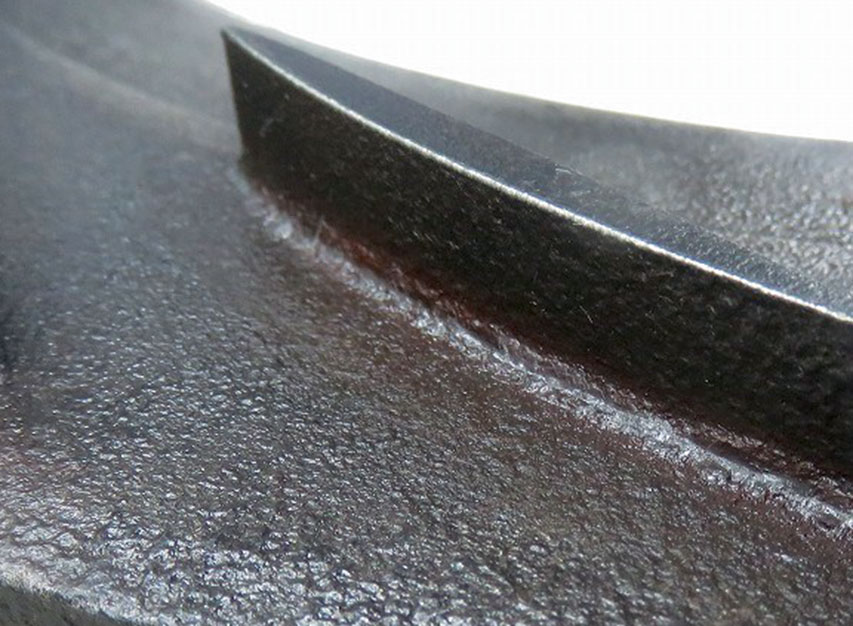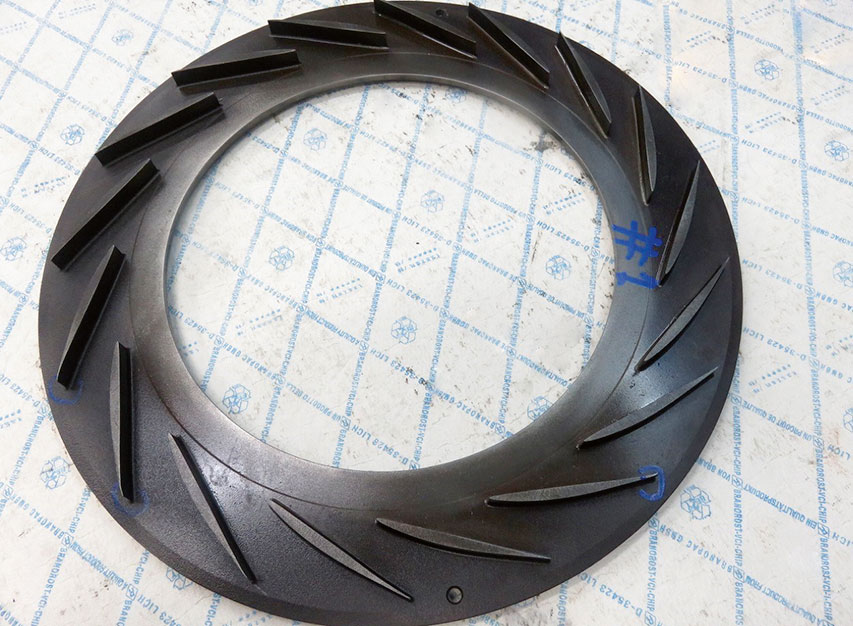In order for your turbocharger to run as efficiently as possible, a clean and well-maintained compressor stage is critical. The compressor stage itself is more than just the compressor wheel; it includes every component from the air intake to the air outlet of the turbocharger.
A clean and well-maintained compressor stage is one of the key factors contributing to reliable turbocharger operation and high efficiency. Contamination in the compressor stage, as illustrated in Fig. 1, will reduce the performance of the turbocharger. This will lead to consequential effects, including reduced air receiver pressure, higher fuel consumption, higher exhaust gas temperatures, reduced scavenging of the engine, and in severe cases, turbocharger surging.
Accelleron’s turbochargers for marine applications are typically specified with an air filter silencer (AFS). As its name suggests, the AFS ensures pre-filtration of the air as well as a reduction of the noise emission level resulting from air compression. Accelleron’s turbochargers are equipped with a grid around the silencer to prevent bigger foreign objects from entering the turbocharger and passing to the compressor wheel.
Many customers additionally install filter mats around the silencer. Those filter mats may become clogged after some time, which will lead to the effects described above. As such, it’s advisable to frequently check the silencer losses using a u-type manometer. Accelleron recommends that the condition of the silencer be checked when the pressure losses exceed the limit of 30 mbar. To prevent such conditions, the filter mat should be either washed or replaced.
Exhaust gas leakage
In recent years, Accelleron has noticed an increasing number of cases where turbochargers have been sucking in exhaust gases during normal operation. Exhaust gas leakage typically occurs when a connection on the exhaust side is not properly sealed or some of the equipment is not in good shape, with cracked bellows an example.
In such cases, exhaust gas enters the engine room. And as the turbocharger also sucks in engine room air, such leakages ultimately affect the turbocharger equipment.
Based on Accelleron’s experience, our customers notice exhaust leakages once the filter mats start to blacken after a short period of operation. This discoloration is more than just an outside observation, and can also be a sign of turbocharger internal effects.
The individual components of the compressor stage are made from different materials, each carefully selected by Accelleron’s experts on the basis of requirements during normal operation. Designers and manufacturing specialists evaluate the available options to achieve optimal surface qualities as the basis for the components’ individual efficiency.
Among other elements, the exhaust gas contains highly corrosive particles resulting from the fuel or combustion process. Such particles are normally smaller than the filtering mesh size, and can be sucked into the compressor stage and start interacting with individual components.
Consequences of exhaust gas leaks
In cases where the exhaust gas leak is determined and rectified within a short time, there will be no significant impact on either the turbocharger efficiency or on the parts themselves. However, if the turbocharger is operated under such conditions for a longer time, layers will start to form on the flow-relevant components, primarily impacting the compressor wheel, wall insert and air diffuser. These layers will increase the flow resistance of the air passing the compressor stage and lead to efficiency losses. Regular compressor side cleaning as recommended in the Turbocharger Operation Manual may help to partially compensate this effect. Mechanical cleaning of the parts is highly recommended after such an observation.
In the long run, if the compressor stage is exposed to this corrosive environment for a longer time, the component surfaces will be attacked. As a consequence, the roughness of the flow relevant surfaces will be increased, an effect that can neither be reversed by applying the compressor side cleaning or by means of mechanical cleaning (Fig. 2 and 3). The operational impact is identical to that explained above.
In cases of corrosion attack, the real extent of the damage must be assessed, and necessary actions evaluated with care. If there has been severe pre-damage of the compressor wheel, this may even require a replacement prior to the planned interval, resulting in additional costs for the customer.
Accelleron recommends rectifying the exhaust gas leakage as soon as possible. Where compressor stage components are affected by corrosion attack, special care must be taken when applying mechanical cleaning of the individual components. In such cases, Accelleron recommends that operators consult the Turbocharger Operation Manual or seek support from any Accelleron Service Station.
A well-maintained turbocharger is one of the key success factors in the optimized operational excellence of your engine. The better the turbocharger performance, the lower the fuel consumption and the lower the exhaust gas temperatures. A reduced exhaust gas temperature level also has a positive effect on component lifetime, a benefit not only for the turbocharger but also for the engine equipment. Finally, it’s wellness for your wallet.

















